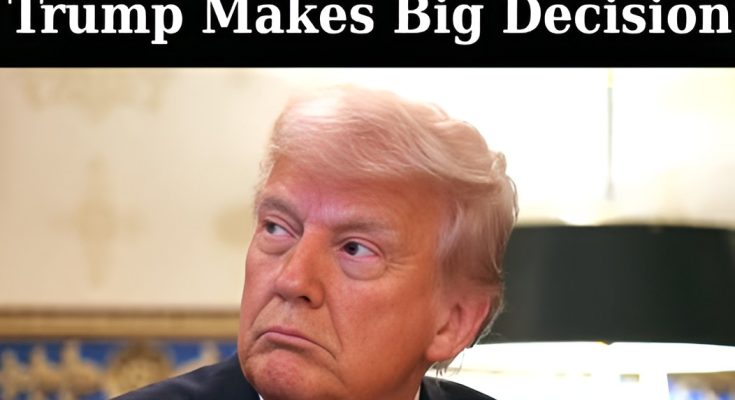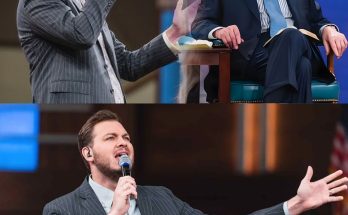On April 26, the annual White House Correspondents’ Dinner will unfold without the presence of President Donald Trump, who has declared he will not attend the event, continuing a tradition he started during his first term. This decision amplifies the established conflict between the Trump administration and the White House Correspondents’ Association (WHCA), an organization representing journalists and press members covering the presidency. Trump’s ongoing absence underscores his ongoing criticism of the media landscape, which he argues is biased against his administration.
The Historical Significance of the Correspondents’ Dinner
The White House Correspondents’ Dinner dates back to 1921 and stands as an iconic event wherein journalists, politicians, and celebrities convene to celebrate the freedom of the press and its role within American democracy. Intended as an opportunity for informal engagement between reporters and the executive branch, the dinner has gradually evolved into a symbolic touchstone for the media and the political milieu in which it exists.
Traditionally, the dinner provides an opportunity for the president to engage directly with journalists through humor and good-natured jest, acknowledging the essential role of the press in holding leadership accountable. However, in the current polarized media climate, this casual camaraderie has turned contentious, with Trump’s refusal to attend highlighting the friction between his administration and the press.
Evolution of the Dinner’s Role
Over the years, the Correspondents’ Dinner has seen its fair share of evolution. Initially, it was a modest affair but soon transformed into a star-studded evening with glitz and glamour, catching the attention of Hollywood and turning into a televised event watched by millions.
However, the essence of a night dedicated to celebrating the freedoms afforded by the First Amendment remains central. With humor and satire as the connective tissue binding the event together, the dinner remains an important venue that underscores the critical nature of robust media relations and engagement in political discourse.
Trump’s Relationship with the Media
The fraught relationship between President Trump and the press has been a defining aspect of his political career. Derogatively referring to certain media outlets as “fake news,” Trump has positioned himself as an adversary of mainstream journalism, a move that appeals to segments of his supporter base who distrust traditional media narratives.
“Fake News” and Counter-Narratives
The term “fake news” has become synonymous with President Trump’s strategic efforts to undermine critical press coverage, casting doubt on journalistic integrity. By labeling unfavorable reports as inaccurate or false, Trump can effectively diminish their impact, invigorating loyal supporters with an alternative framing of political narratives.
In response, Trump introduced the “Fake News Awards” as a counter-narrative to the Correspondents’ Dinner. This annual list details government misrepresentations and alleged disinformation propagated by the media, serving as a response to perceived slights by the press and reinforcing division between the administration and news organizations.
Impact on Public Attitudes
Trump’s rhetoric regarding the press has significantly influenced public attitudes toward the media. By positioning himself as a “defender” against media bias, he cultivates a persona of resistance against a perceived epistemic elite that views him as an outsider or agitator.
While Trump’s supporters often welcome his critiques of the media, asserting that they resonate within a sphere of “common sense” and transparency, critics argue that these narratives undermine journalistic accountability and financial security within the industry, as mistrust in traditional media institutions becomes entrenched.
The White House Correspondents’ Dinner: A Backdrop for Political Critique
Under President Trump’s tenure, the Correspondents’ Dinner has increasingly embodied a confluence of media critique and political activism. With tensions between the administration and journalists running high, the nature of the event—traditionally one of levity and entertainment—has been colored by the political issues of the moment.
Political Humor in the Agile Public Sphere
The Dinner has consistently relied on humor, using it as a vehicle to address serious matters through the lens of satire. As a platform for public figures to provide commentary on political issues via comedic means, the correspondents’ dinner brings humor to traditionally tense political arenas.
Barbed witticisms targeting policy, decisions, or political figures serve as a form of critique, reflecting broader societal attitudes, and satirizing the status quo. Given Trump’s aversion to such direct criticism, his absence serves to underscore a broader unwillingness to engage in what he sees as an inherently adversarial environment.
Controversy Surrounding Comedians
The subsequent controversy surrounding comedian Amber Ruffin demonstrates starkly the difficulties that have characterized recent iterations of the Correspondents’ Dinner. Ruffin—known for aggressively critiquing sociopolitical issues—was selected as a headliner, only to later be removed due to her proclivity toward engaging in pointed political criticism that challenged the administration’s narrative.
Ruffin’s critiques, especially following the acquittal of teenager Kyle Rittenhouse for defending himself during the Jacob Blake protests, have attracted both condemnation and celebration, revealing sharp divides in public opinion. For Trump, these polarizing figures at the event highlight the biases he perceives within the WHCA’s current framework.
Press Freedoms and Alarm in the Time of Trump
The Trump presidency has triggered ongoing discourse surrounding press freedoms and the role of media organizations in democracy. As challenges to traditional media have increased, concerns over press limitations have culminated in a broader examination of how political power interfaces with journalism in the United States.
Media Access and Administration Woes
The WHCA’s mandate stems from an inherent responsibility to bridge the gap between reporters and the administration. Despite this, recent developments highlight the strain between these two entities. Press Secretary Karoline Leavitt’s declaration that the White House intends to control the pool reporter rotation represents an effort to manage which media outlets engage directly with administration activities.
This control mechanism amplifies tensions between the White House and press organizations, raising alarms over transparency and the accessibility of public information. Critiques of restricted access and controlled narratives inevitably lead to broader questions surrounding the concentration of power and the media’s role in democracy.
Barriers to Access and Reporter Critiques
Another development that signifies a departure from previous administrations is the barring of the Associated Press from the press pool—a consequence of their unwillingness to lend support to Trump’s Gulf of America rename proposal. This decision underlines concerns cataloged by journalist organizations regarding limited access and rights to comprehensive coverage.
The selective allocation of media resources threatens to undermine journalistic autonomy and disrupts perceptions surrounding press impartiality and fairness. As the Trump administration continues to identify adversaries within the press corps, this intensifies the strain on information dissemination and public trust in institutional accountability.
The Correspondents’ Dinner as a Cultural Touchstone
The evolving nature of the Correspondents’ Dinner shines a light on the intersection of culture and politics. As cracks appear within the traditional structure of media and political engagement, reflecting societal shifts, the cultural symbolism attached to the event becomes even more prominent.
The Dinner as Part of a Broader Cultural Divide
The cultural divide evidenced by the Correspondents’ Dinner does not exist in a vacuum; it is the result of broader societal tensions manifesting through the lens of media and politics. The event stands as a microcosm of cultural clashes that routinely play out in the broader public sphere.
Trump’s approach, characterized by open avoidance of the spectacle altogether, reflects a disapproval not only of its structure but of the values to which it appears to ascribe. Within this context, the Correspondents’ Dinner is no longer a mere instance of lighthearted satire but a platform for competing ideologies shaped by an evolving media landscape.
Reflection of Public Sentiment
While some segments of the public view the dinner as a manifestation of cultural elitism, aimed at reinforcing existing power dynamics, others identify it as a champion of press freedom. This division highlights an ideological split within the American populace, intensified by interpretations of what the media should strive to represent.
Furthermore, the challenging of traditional media authority by political figures symbolizes a contentious shift in how the public perceives the Fourth Estate. Treatment of the Correspondents’ Dinner thus becomes reflective of widened gaps in truth-making institutions and the values they represent.
Trump, the WHCA, and Revitalizing Party Affiliation
Concurrent with the flurry surrounding President Trump’s boycott of the Correspondents’ Dinner is the broader narrative of shifting party dynamics. Emerging polling reveals a tectonic shift—a reversal of long-standing political norms under Trump’s tenure, where Republicans increasingly emerge as the “party of the people.”
Data Analysis and Party Realignments
Recent polling by CNN analyst Harry Enten showcases a departure from traditional perceptions of the political landscape. Enten asserts that Republicans have succeeded in positioning themselves as representatives of everyday Americans—a contrast to historical Democratic advantages in embodying this role.
This newfound alignment signals a significant realignment in party identification. The poll indicates that even amidst contentious headlines, Republicans and Democrats are effectively tied in terms of their capacity to champion the needs of average citizens.
Repercussions for Political Strategy
The implications of such shifts in public perception are considerable, presenting both parties with challenges and opportunities to renegotiate their positions within the political sphere. Democrats face the necessity of reconnecting with working-class voters who have grown disenchanted with the party, while Republicans could capitalize on the sentiment to solidify their newfound reputation as the party of the working class.
This evolving political alignment underscores the necessity of re-evaluation within both parties regarding the policy priorities and outreach strategies that resonate with an electorate rapidly adjusting to shifting socio-economic climates.
Navigating the Future of Media and Politics
The intersection of media engagement and political strategy requires reevaluation amidst heightened tension between institutional news organizations and political figures. The experiences and outcomes gleaned from the Trump presidency provide a platform for introspection within both arenas, redefining how messaging impacts public perception.
Reimagining the Role of Media
One of the central conversations emerging from the Trump era involves redefining the role of traditional media outlets in shaping public narratives. President Trump’s attempts to bypass existing structures by appealing directly to audiences through personal platforms—such as social media—signal a broader disruption in communication paradigms.
Moving forward, media organizations may need to adopt more nuanced strategies while engaging with audiences, addressing biases, and reimagining their relationships with political actors. Embracing transparency, amplifying diverse voices, and confronting narratives perceived as biased will be essential to regaining trust within fractured media landscapes.
Political Communication in a New Era
The political communication strategies evolving under Trump’s guidance also necessitate adaptation from future political leaders. While direct-to-consumer communication offers an avenue for bolstering supporters and countering criticism, it simultaneously raises questions over accountability and genuine public discourse.
Navigating the dual role of conductive representative and media figurehead requires a balancing act that straddles responsiveness and respect for public scrutiny. Looking ahead, how political strategists choose to engage with media narratives will play a pivotal role in shaping electoral success and legitimacy.
Conclusion: Setting a Path Forward
In conclusion, President Trump’s decision to avoid the White House Correspondents’ Dinner is emblematic of a broader ethos underpinning his use of media—including criticism, manipulation, and resistance. As Trump navigates the turbulent waters of media relations, a broader discourse has materialized, scrutinizing how traditional institutions meet the demands of increasingly diverse and skeptical publics.
This new era underscores an epoch-defining political tenure characterized by rapid adaptations to public sentiment and the recalibration of media and party structures. Trump’s decision and the subsequent discourse illustrate the inherent tension between cultural customs and political realities, forcing both media entities and policymakers to reflect on their respective roles within evolving democratic frameworks.
As Trump’s presidency progresses, the consequences of these ongoing dynamics will likely reverberate throughout American institutions, shaping policy, engagement, and the narratives that define national identity. The Correspondents’ Dinner remains a focal point deepening these discussions, inviting careful scrutiny and reflections on the transformative relationship shared among journalism, politics, and culture.



